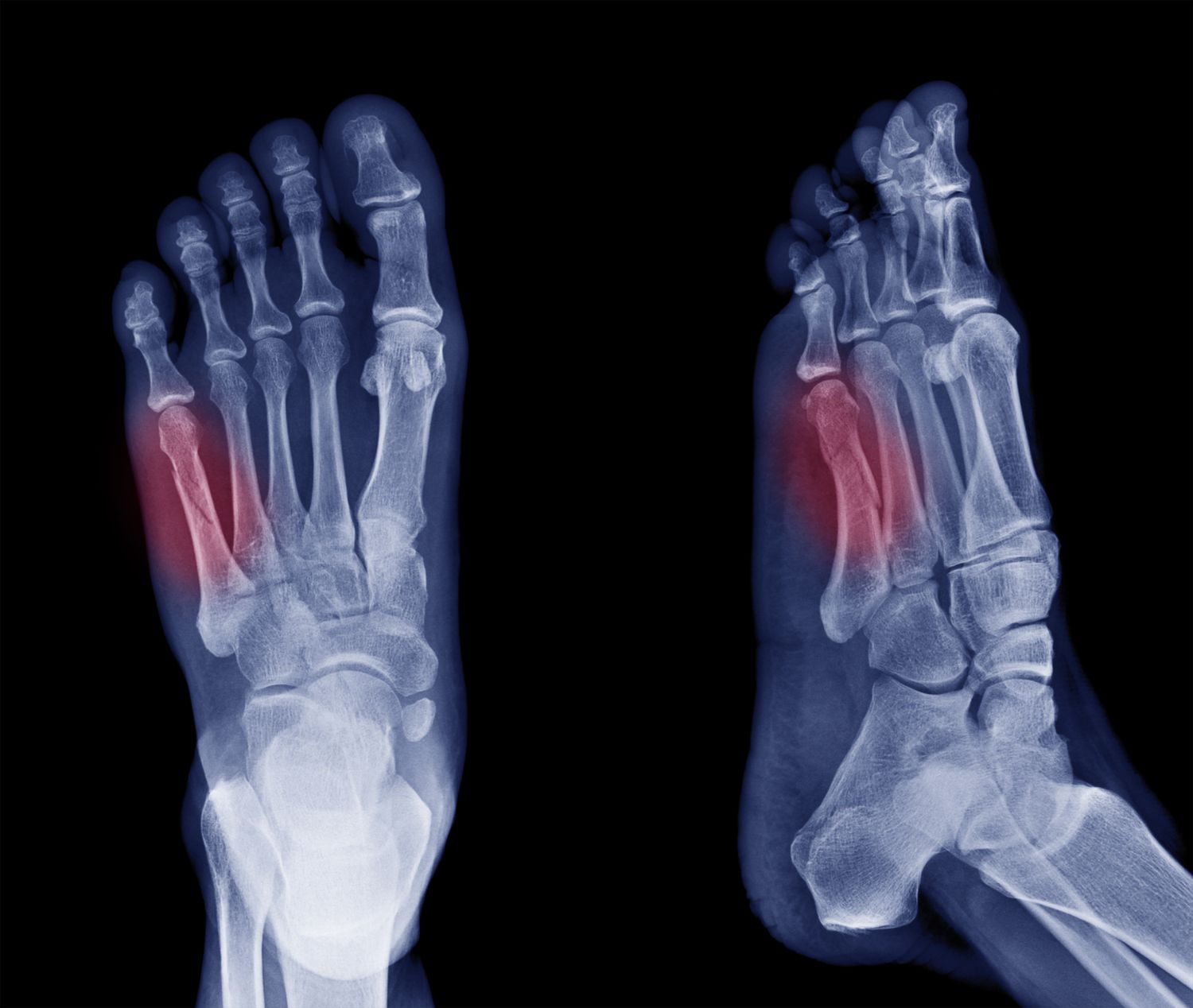A metatarsal fracture is a break or crack in one of the long bones located in the foot called metatarsals. The metatarsals are the five long bones that extend from the midfoot to the base of the toes. Fractures in this area can occur due to various reasons, such as direct trauma, repetitive stress, or underlying medical conditions that weaken the bones.
Symptoms of a metatarsal fracture may include:
- Pain: You may experience localized pain at the site of the fracture, which can worsen with movement or bearing weight on the foot.
- Swelling: Swelling around the injured area is common and may extend to the surrounding foot and ankle.
- Bruising: You might notice bruising or discoloration around the affected area.
- Difficulty walking: Walking or putting weight on the foot may be challenging and painful.
- Deformity: In severe cases, a visible deformity or abnormal positioning of the foot may be noticeable.
If you suspect a metatarsal fracture, it’s important to seek medical attention for proper diagnosis and treatment. A healthcare professional, such as an orthopedic specialist or podiatrist, will typically perform a physical examination and may order imaging tests, such as X-rays or an MRI, to confirm the diagnosis and assess the severity of the fracture.
Treatment for a metatarsal fracture depends on the type and extent of the injury. Common approaches include:
- Immobilization: The affected foot may be placed in a cast, splint, or walking boot to immobilize the area and promote healing.
- Pain management: Over-the-counter pain relievers or prescribed medications may be recommended to manage pain and reduce inflammation.
- Rest and limited weight-bearing: You may be advised to avoid putting weight on the injured foot and rest as much as possible.
- Elevation and ice: Elevating the foot and applying ice packs can help reduce swelling and discomfort.
- Crutches or assistive devices: In cases where walking is too painful, crutches or other assistive devices may be provided to aid mobility.
- Physical therapy: Once the initial healing phase has passed, physical therapy exercises and stretches may be recommended to regain strength, mobility, and prevent stiffness.
It’s crucial to follow your healthcare professional’s instructions regarding weight-bearing, immobilization, and rehabilitation to ensure proper healing and prevent complications. Recovery time can vary depending on the severity of the fracture, but it generally takes several weeks to a few months for the bone to heal fully.


